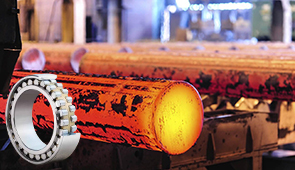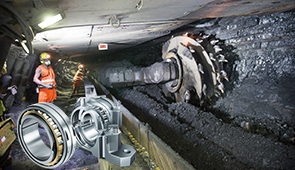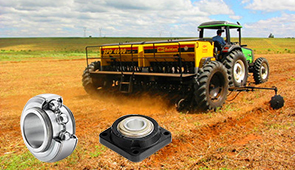Understanding Lathe Spindle Types and Their Applications
When selecting a spindle for your machinery or manufacturing process, cost is a critical factor that directly impacts both budget allocation and operational efficiency. Understanding the financial implications of spindle choices—ranging from initial investment to long-term maintenance—ensures smarter, more sustainable decisions. This article will provide a comprehensive analysis of the key cost components associated with spindles, including material specifications, performance trade-offs, and lifecycle expenditures. Whether you are seeking to optimize productivity or reduce total ownership costs, this guide is designed to equip you with the knowledge necessary to make an informed and strategic spindle selection.
Lathe Spindle Noses and Mounting Options

Understanding Lathe Spindle Nose Types
The interface design of the spindle is called the spindle nose. It decided how chucks, jigs, and other accessories would be developed into the spindle. The spindle nose design offers accuracy and stability during machining. The common lathe spindle nose types include thread, camlock, and taper/key. Different designs exist to meet operational needs or for compatibility with different machines.
Threaded spindle noses are typically found on older or simpler lathes. The spindle itself will have external threads that are mated with the internal threads of the accessory. They were considered to be an easy means of working with, but required more setup time for removal. However, due to the characteristics of such spindle noses, which do not favor high accuracy or rapid tool-change requirements in industries, they are rarely seen today.
With camlock spindles being superior in respect to tapered pins and a cam mechanism that holds the accessory tight, the mounting is secure and extremely accurate. These particular cams find huge application in both manual and CNC lathes owing to their reliability, speed, and repeatability. A slight twist and camlocks fix or remove an accessory in no time, perfect for production areas. Where maximum precision and strength count, short taper and key spindle noses give the stiffest connection possible. Heavy-duty work that demands constant accuracy and load-bearing will be the best practical setting for these. With knowledge of these differences, the machinist will be able to select the proper spindle nose type based upon machine compatibility as well as task requirements.
Mounting Methods for Lathe Spindles
Spindle mounting has several special methods standardized, with each method aiming to provide efficient operations, safer workholder holding, etc. These methods include the threaded spindle, the taper spindle, the cam-lock spindle, and the long-taper key drive spindle. And so each method of mounting is developed with specific operational requirements in mind, so as to remain dependable under differing conditions.
Threaded spindles rely on screw-threaded connectors, where the chuck or the workpiece adapter is screwed directly onto the spindle. Although this method is simple and inexpensive, it is usually not recommended for reversing operations because of the risk of workpiece disengagement. Tapered spindles rely on a precisely machined taper that is usually drawn up into the spindle by the drawbar or retained by collets to achieve a rigid mounting. These are usually reserved for high-precision work, as they provide the best alignment.
Cam-lock spindles incorporate cam-actuated locking pins that lock the mounting fixture securely and quickly. Because of this, the cam-lock spindle mounting is considered the easiest in terms of installation and removal, thus making it a preferred choice in industries where changes are frequent. Finally, long-taper key drive spindles are another way of combining the key advantages of tapered mounting with torque transfer through keyways. This combination ensures rigid mounting when machining large components with profuse torque and high strength requirements. When these methods are understood, a machinist can much better correlate spindle mounting systems to operational requirements, which enhances precision and safety.
Comparison of Different Mounts
Spindle mounting systems can be compared considering mainly three aspects: stability, ease of use, and application versatility. Threaded mounts, being the most basic and least expensive system, are typically less stable under heavy loads as compared to tapered or key-driven systems. In other words, these mounts cannot be used where extreme precision or strength is required, such as in heavy-duty machining or high-speed drilling operations.
Camlock systems provide an elegant compromise between ease of use and performance, hence their popularity in industrial applications. Quick changes improve the efficiency of operations requiring frequent tool changes while maintaining sufficient stability for medium-duty tasks. On the other hand, camlock mounts fall short in ultra-precision applications that require ultimate stability under extreme torque.
Long taper key drives provide the best rigidity for applications of the utmost torque and strength. Hence, they combine the advantage of alignment, a tapered design has with the advantage of an internal keyway in the mount for allowing excellent torque transfer while minimizing vibration and misalignment issues. For the same reason, long taper key drives are used in demanding environments of heavy metalworking or complicated machining tasks. The final choice of mounting would weigh these against the operational requirements in terms of reflection and application that favor less or more simplicity, precision, or robustness.
Choosing the Right Lathe Spindle
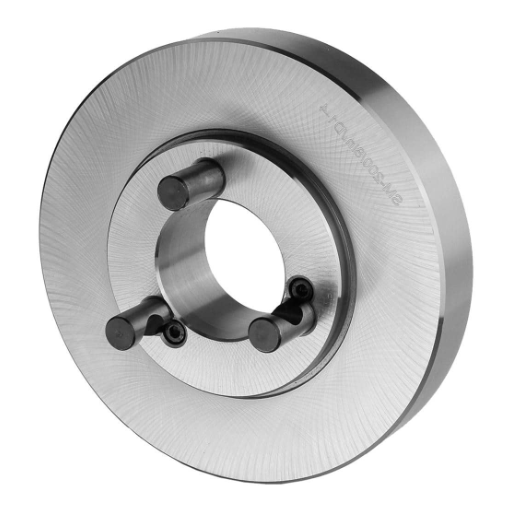
Assessing Material Compatibility
Material compatibility during machining processes plays a crucial role in achieving the final efficiency of a lathe spindle. The hardness level, tensile strength, and thermal expansivity of the material being worked on must match those of the spindles so that they do not get worn off too quickly and maintain precision during machining. Because of their resistance to deformation and complexity in machining, materials like hardened steel or superalloys would need spindles of high rigidity, the best transmission of torque, and the most stability. On the other hand, materials on the softer end of the scale, like aluminum or plastics, may not require such high-end specs but do need high speeds and good vibration dampening for an excellent finish.
Compatibility also depends on the material used in making the spindle and how it is constructed. Using alloy steel in spindle manufacture is common due to its inherent strength and durability; the material performs well under high-speed operations and significant load stress, while a particular coating, such as nitriding or chromium-plating, may enhance its wear resistance further and reduce friction. One should also consider how the performance of a spindle is affected by exposure to cutting fluids, chips, and heat during machining operations over an extended period. Asking for materials and coatings highly resistant to corrosion and heat becomes very important in situations where manufacturing is either carried out continuously or with a great degree of precision.
Moreover, from a material selection standpoint, the consideration of the thermal and external environmental impacts during the machining process must be taken into consideration. For instance, in machining heat-sensitive materials at high speeds, the spindles must have the best thermal control to avoid overheating and ensure consistency, which may be attained by employing either advanced spindle cooling methods or precision bearings capable of performing under severe conditions. The operators can select spindle designs to further the efficiency of operations and prolong service life while minimizing the chance of failure for a wide array of applications by employing detailed analysis involving material stress testing and simulations.
Determining Precision Requirements
Setting specific machining standards begins with identifying tolerances and performance criteria for the application. The degree of precision required will usually depend on the type of material being machined, geometric intricacies, and what function the finished piece will perform. Critical tolerances have to be set according to technical standards, which might be ISO or ASME specifications, to make a common production language across companies.
High-grade testing mechanisms are required to measure deviations at the micro level, including coordinate-measuring machines and laser interferometry. In this way, engineers ensure that the marketed component is well beyond the claimed tolerance levels all the way through development.
For micro-machining, tighter tolerances than ±1 micron may be required for aerospace or medical device manufacturing, where absolute accuracy is compulsory for the components to function and be safe. The choice of cutting tools and machines must be made based on the required accuracy. Modern techniques such as adaptive control systems with real-time feedback help in guaranteeing dimensional accuracy during an extended period.
Machining tolerances diagnosed and measured with data from a continuous evaluation and predictive modeling will be smart enough to alert components of possible variance before they even affect production. By combining intelligent systems and sound calibration techniques, the manufacturer can maintain sustainability in precision levels and exploit production cycles in a highly competitive environment.
Identifying Specific Machining Needs
Addressing specific machining concerns calls for an intricate understanding of component complexities, material attributes, and given tolerances. Machinery and engineering personnel must now identify critical dimensions and part features early in the design phase, including the decision on whether special tooling is required or if the system can be programmed to accommodate the geometries involved. Equally important is the behavior of the chosen materials under machining conditions. Cutting forces, thermal expansion, and wear resistance can all affect a particular machining strategy and greatly influence the performance of the end product.
Advanced measurement technology, such as coordinate measuring machines (CMMs) and laser scanning systems, can be employed to evaluate machined components very precisely against design specifications. The best practice would be to integrate these systems into a real-time data monitoring scheme so that any deviations are immediately detected and corrective measures are implemented such as to optimally reduce scrap and therefore costly reworking time. Furthermore, this process could be even more enhanced, where predictive analytics are layered upon prior machining process data to inform how issues such as tool wear or thermal deformation could arise before they occur. In doing so, unscheduled downtime is reduced, while equipment efficiency is improved, allowing manufacturers to meet tight production deadlines without compromising quality.
Moreover, to keep pace with the growing demand for customization of production, flexible manufacturing cells with exchanging tooling systems need to be embraced in modern manufacturing. The careers of manufacturers working in these dynamic industries are often cut short when they have to handle production runs requiring one-of-a-kind specifications for short periods. By adjusting machining operations for each requirement and running software-driven simulations to predict outcomes, manufacturers will do better and will do so cheaper. Putting all these pieces together as a fully integrated production setup highlights the critical importance of pinpointing and evaluating machining needs with great precision and foresight.
Applications of Lathe Spindles Across Industries
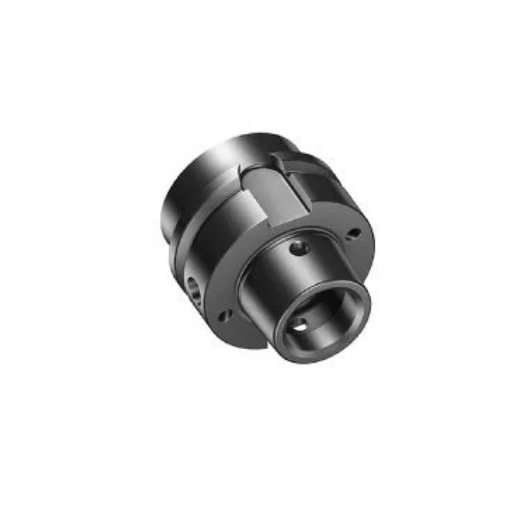
Aerospace Industry Applications
Unquestionably, the role lathe spindles play in the aerospace industry is of importance as they enable the precision manufacture of components that need to be exactly within tolerances and safety standards. These spindles find usage in machining centers that exhibit great amounts of consistency in producing parts. Some applications of lathe spindles in aerospace manufacturing include:
- Engine Components: The lathe spindle fine-tunes the machining on turbine blades, shafts, and casings for jet engines. These require extreme precision, with tolerances often within 0.001 inches, to make sure that the parts stay efficient and reliable at high-speed operation.
- Landing Gear Systems: Lathe spindles working with landing gear parts, such as struts and actuators, must be capable of machining hard metals like titanium and stainless steel. The torque and rigidity offered by these spindles will allow precision machining of complex geometries.
- Structural Components: These aero-structural components, like fuselage frames and wing spar, are machined with heavy lathe spindles. The components have to meet weight and strength parameters imposed on industry standards and performance benchmarks.
- Fasteners and Connectors: Aerospace-grade fasteners and connectors are produced by high-speed lathe spindles with the required precision and surface finishing. These have to withstand conditions of high vibration and thermal stresses.
- Avionics and Instrumentation Parts: The manufacturing of parts employed in avionics systems, e.g., sensor housings and electronic enclosures, would not be truly possible without lathe spindles. The parts are made to precise specifications to ensure that they are suitable for use in flight-critical systems.
With the sharing of machining efficiency, accuracy, and reliability, lathe spindles aid the aerospace industry in meeting its rigors. This means that components are not only safely allowed by regulations but can also support the operational requirements of modern aircraft.
Machinery and Tool Manufacturing
The machinery and tool manufacturing sector is instrumental in instigating progress in a series of industrial fields. Machinery tool manufacturing uses the latest technology, such as CNC machining, additive manufacturing, and precision grinding, with all steps being attained in the workshop environment, ensuring maximum precision and durability. Emphasis is largely placed on the creation of materials that would, for example, improve wear resistance or extend the lifetime of an object: tungsten carbide, high-speed steels, and advanced ceramics.
With advanced manufacturing techniques such as 5-axis machining, complex geometries can be generated, and parts produced to extremely tight tolerances essential for aerospace and automotive industries. Enhanced use of automation and robotics also helped minimize errors in machinery manufacturing, while maximizing production throughput to deliver products within stipulated timelines.
By integrating data-driven decisions, such as predictive maintenance or real-time monitoring, firms can guarantee optimized production workflows with a drop in downtime and improved tool performance. These top-notch manufacturing solutions signify their credibility in being innovative, reliable, and extremely precise.
Advantages of Different Lathe Spindle Types
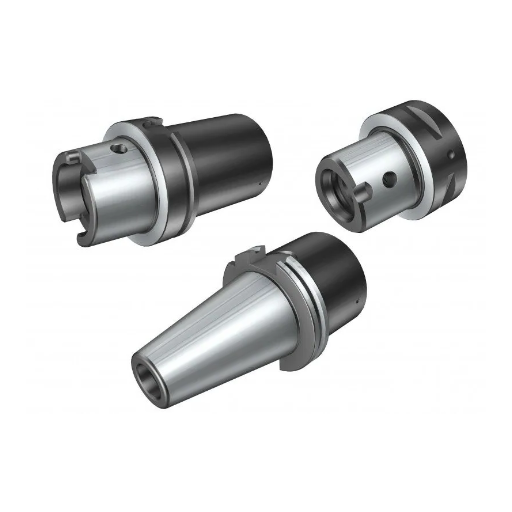
Performance Benefits of Standard and Taper Spindles
- High Accuracy in Machining: Both kinds of spindles are supposed to provide extreme accuracy in operation. The standard spindle gives uniform rotational performance, whereas the taper spindle ensures tool alignment with precision and, therefore, improves machining accuracy by eliminating mechanical runout.
- Enhanced Tool Compatibility: This type of spindle, with its conical mating surface, affords a wider choice of different tool types and sizes, thereby enhancing the flexibility of operation. On standard spindles, multiple tool holders are used and thus are equally flexible in general or special-purpose applications.
- Improved Mechanical Stability: Due to its taper fit configuration, a taper spindle permits force to be evenly distributed onto the contact surface to minimize vibrations, thus suppressing them in high-speed machining. Standard spindles support steady performance with a fixed load over time, ensuring their continuous operation over longer durations.
- Bearing Greater Loads: Being a taper fit, taper spindle bears greater loads; this is useful for heavy-duty applications and somewhat heavy machining tasks. Standard spindles provide great durability for medium loads and hence ensure dependable performance of everyday work.
- Shorter Tool Change Time: Providing for quick and secure tool change with its self-locking interface, taper spindles maximize production efficiency. Despite being somewhat slower, standard spindles guarantee smooth tool changes, requiring less frequent tool adjustments.
These benefits give an overview of what sets those spindles apart in precision manufacture; machinists can go for either of the two types of spindle, depending on the operational requirement.
Efficiency Gains from Camlock Mounts
In my experience, camlock mounts greatly promote operational efficiency by providing a fast and secure method of installing and uninstalling components such as chucks and fixtures on precision machines. These mounts operate on locking cams that offer the ability to either tighten or release them in one easy rotation of the cam. This reduces the setup-time changes significantly compared to the older systems of threads or bolt-on.
The time saved due to the use of camlock mounting is of grave importance for the high-output manufacturing settings where adjustments and tool changes are needed quite frequently. Minimization of downtime during such transitions helps camlocks to keep production levels consistent and reduces the cycle time in general. In addition, the design incorporates a simple locking method for a reliable fastening, which is very important for both alignment and tolerance during operation.
Operator fatigue is reduced, along with the possibility of an error, given that they are intuitively designed and easy to use. This fact improves workplace ergonomics and safety, as it reduces the chances that components may not be properly secured. Therefore, camlock mountings are a good practical solution to facilitating modern precision manufacturing processes by efficient means.
Cost Considerations for Spindle Selection
Pricing considerations for selecting a spindle require an assessment of key factors that ensure the best trade-off for the given performance requirements and pricing limits. The initial purchase price of the spindle varies with requirements in terms of materials, precision, speed ratings, and compatibility with a particular machine tool. One-hundred-percent closer tolerances to the very thin margins of a spindle usually command a premium over other machines but greater accuracy and durability reduce its operational costs in the long run.
A second cost factor, the duration over which it is used, assumes great importance. Brought up under TCO would be expenses related to more or less frequent maintenance, availability of spares, et cetera. Such considerations support the argument that, for example, a spindle equipped with hybrid ceramic bearings could be an upfront investment that saves on maintenance costs and has a longer service life.
Thirdly, some modern systems often integrate sensor technology into a spindle to assist with real-time condition monitoring, but checking on this feature may rather increase your overall investment. Analyzing the cost of the installation itself and the ancillary costs associated with solving compatibility problems caused by new equipment are the best ways to guard against any off-the-shelf surprise expenses from a project.
Finally, understanding the specific requirements of the application, whether heavy-duty cutting, high-speed milling, or multi-axis machining, helps guide the selection of a spindle that best meets performance requirements without paying for extraneous features. Taking a holistic view of both direct and indirect expenses will help manufacturers make cost-effective decisions that secure the best value and high performance for their operations.
Emerging Trends in Lathe Spindle Technology
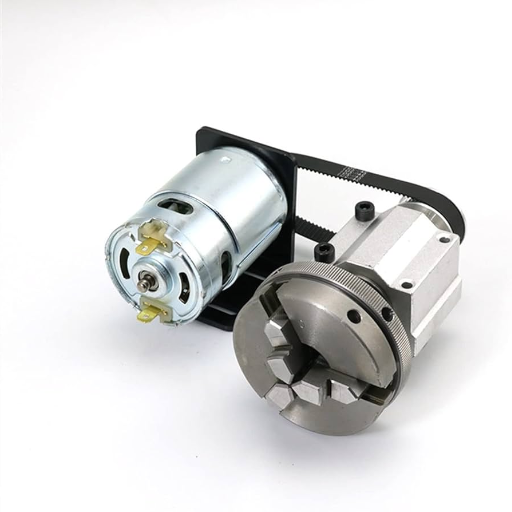
Innovations in Spindle Design
Further developments in spindle design have resulted in spindle improvements in terms of precision, efficiency, and versatility. An ever-increasing number of manufacturers integrate hybrid bearing systems consisting of ceramic and steel elements, which allow for lower friction, better durability, and higher speed operation with minimal thermal expansion. The realization of these design improvements translates directly into increased spindle life and retained accuracy during extended use.
The integration of sensor-based technology is bringing in changes with respect to how spindles are monitored and maintained. Embedded sensors acquire real-time data so manufacturers may monitor the spindle temperature, vibration, and load conditions. Thus, this approach of predictive maintenance cuts down on downtime by spotting potential problems before they turn out to be major, unexpected failures.
Another breakthrough has been realized with the direct-drive motorized spindle. By cutting out mechanical transmission components such as belts or gears, higher torque densities and precise speed control are achieved by the direct-drive spindles, which are vital for ultra-precision machining operations, including aerospace and medical device manufacturing. Further advances include lightweight materials such as carbon-fiber-reinforced polymers being introduced into spindle housings to reduce weight while maintaining structural stability and vibration damping.
Collectively, these sets of innovations mark the evolution in spindle technology toward a future where performance optimization, reliability, and automation will be key constituents of demanding machining scenarios.
Impact of Automation on Spindle Functionality
The integration of automation in spindle functions has increased the modern machining systems’ efficiency and precision. Automated processes eliminate human errors, increase consistency in operations, and augment the throughput of production. The five major influences of automation on spindle functioning:
- Improved Tool Change Efficiency: Automation facilitates faster and more accurate tool changes via Automatic Tool Changers (ATCs). This decreases the downtime of the spindle and allows the machine to easily switch from one task to another. It is reported that automated tool change systems reduce cycle time by 30%.
- Enhanced Predictive Maintenance: Automated systems equipped with sensors and machine learning algorithms keep an eye on spindle performance continuously. The data involving temperature, vibration, and rotation speed help forecast possible failure and thus reduce downtime for the machines by 40% through proactive scheduled maintenance.
- Consistent Machining Accuracy: Automation facilitates consistent spindle operation, making up for differences like thermal expansion and vibration, leading to tighter tolerances and higher accuracy that is very important in the micro-level production industry, such as aerospace and medical manufacturing.
- Integrations of Multi-Axis Control: It allows automation to control multiple axes simultaneously in CNC machines to optimize spindle movements for complex geometry. In this way, five-axis machining centers can create higher flexibility in designs courtesy of automation, which ensures speed and precision.
- Energy Efficiency Optimization: With automation, spindle systems can modulate energy consumption according to workload requirements. Smart energy management actually curbs wastage of energy during idle periods, with energy savings of up to 25% having been recorded in automated systems.
Technological advancements demonstrate how automation systems have indeed transformed spindle functionality, improving productivity, quality, and cost-effectiveness for machining applications that are in high demand.
Future Directions for Lathe Spindle Development
The ongoing improvements in lathe spindle systems have allied themselves with precision-engineering advancements, digital integration, and sustainability. An important focus for future consideration is the utmost conventional accuracy in machining, which comes from the use of better materials and bearing technology. The use of high-grade ceramics and composites is also being investigated to curb thermal expansion, thus improving rigidity-one of the major problems encountered in high-speed and high-torque applications.
One other direction for attention involves incorporating IoT and real-time monitoring into spindle assemblies. Just by embedding advanced sensors within spindles, manufacturers could establish a continuous monitoring system, like rotational speeds, temperatures, and vibrations. This could then aid in preventive maintenance, thus further preventing any erosion in sudden downtimes and in servicing the life of the equipment. Some studies have substantiated that predictive maintenance could reduce up to 30% of machine maintenance costs while slightly improving the availability of the entire equipment.
Sustainability remains paramount, with research largely focused on designing an energy-efficient spindle. This could involve using lighter and high-strength materials that require less energy during operation, or the utilization of a regenerative braking system that allows for energy recovery during deceleration. Together, these innovations support global sustainability targets and, at the same time, help manufacturers economically through lowered energy costs.
Last but not least, AI-based control algorithms would bring additional improvements in spindle performance. Algorithms can optimize machining dynamically in real-time to improve surface finishing, reduce material wastage, and ensure process stability under varying conditions. This continued integration of mechanical and digital technologies shall rewrite the very possibilities of lathe spindle systems, increasing improvements in efficiency, precision, and sustainability.
Frequently Asked Questions (FAQ)
Q: What are the main types of lathe spindles?
A: Lathe spindle types can be broadly categorized into several types, including plain spindles, belt-driven spindles, and high-speed spindles. Each type serves different applications and is designed for specific operations, such as woodturning or metalworking.
Q: How do I choose the correct lathe spindle size?
A: Selecting the correct lathe spindle size depends on the type of work you plan to do. For larger industrial-class projects, a bigger spindle may be necessary to handle increased power requirements and larger workpieces. Referencing a sizing chart can help you determine the appropriate size for your lathe.
Q: What is the difference between short taper and long taper spindles?
A: Short taper spindles provide a more compact design, ideal for smaller machines, while long taper spindles offer better alignment and rigidity, making them suitable for larger and more powerful lathes. The choice between them often depends on the specific lathe spindle types used in your workshop.
Q: Can I use a chuck with any lathe spindle type?
A: Not all chucks are compatible with every lathe spindle type. It’s essential to ensure that the chuck matches the spindle’s dimensions and mounting style. For instance, flanged retention nuts and key for positive locating fittings are specific to certain spindle designs.
Q: What role does the motor play in lathe spindle operation?
A: The motor is crucial in driving the lathe spindle, providing the necessary power to rotate the workpiece. Different lathe spindle types may require specific motor configurations to achieve optimal performance and efficiency.
Q: How do turret lathes differ in terms of spindle types?
A: Turret lathes often utilize specialized spindle designs that allow for quick tool changes and multiple operations in a single setup. These lathe spindle types are designed for increased productivity and efficiency in machining.
Q: What are the benefits of using single-spindle automatics in lathe spindles?
A: Single-spindle automatics are designed for high-volume production, offering faster cycle times and improved consistency. They often feature specific lathe spindle types that maximize efficiency and reduce setup times, making them ideal for repetitive tasks.
Q: Are there specific lathe spindle types for woodturning?
A: Yes, woodturning lathes often utilize lathe spindle types designed for softer materials, featuring larger diameters or specialized chuck systems to accommodate various wood sizes and shapes. These spindles are optimized for the unique requirements of wood machining.
Q: What construction considerations should I have for lathe spindle types?
A: The construction of lathe spindle types should consider factors such as material strength, precision, and vibration resistance. Choosing high-quality materials and robust designs is essential for achieving optimal performance and longevity in your lathe operations.
UCTH213-40J-300 with Setscrew(inch)
CNSORDERNO: Normal-duty(2)
TOGN: UCTH213-40J-300
SDI: B-R1/8
SD: 2 1/2
UCTH212-39J-300 with Setscrew(inch)
CNSORDERNO: Normal-duty(2)
TOGN: UCTH212-39J-300
SDI: B-R1/8
SD: 2 7/16
UCTH212-38J-300 with Setscrew(inch)
CNSORDERNO: Normal-duty(2)
TOGN: UCTH212-38J-300
SDI: B-R1/8
SD: 2 3/8
UCTH212-36J-300 with Setscrew(inch)
CNSORDERNO: Normal-duty(2)
TOGN: UCTH212-36J-300
SDI: B-R1/8
SD: 2 1/4
UCTH211-35J-300 with Setscrew(inch)
CNSORDERNO: Normal-duty(2)
TOGN: UCTH211-35J-300
SDI: B-R1/8
SD: 2 3/16
UCTH211-34J-300 with Setscrew(inch)
CNSORDERNO: Normal-duty(2)
TOGN: UCTH211-34J-300
SDI: B-R1/8
SD: 2 1/8












